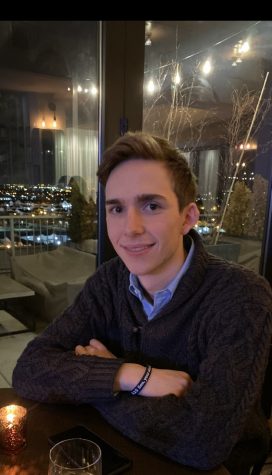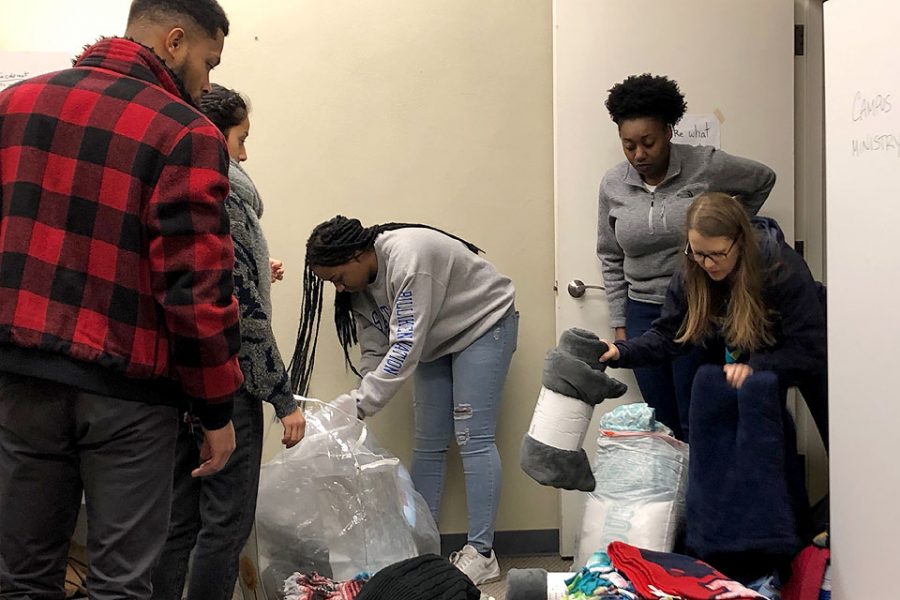Winter Shelter Opens for Second Year
This year, each Wednesday during the month of February, a group of SLU student volunteers are hosting a winter shelter at Manresa Retreat Center. The shelter has successfully provided food, warmth and comfort to guests the past two Wednesdays of this month, and will be open for the next two weeks, on Feb. 19 and Feb. 26.
The shelter opened for the first time last year in January, as St. Louis experienced a polar vortex that saw single digit temperatures and wind chills well below zero.
In response to the dangerous drop in temperature, senior Devonn Thomas and a group of friends and associates negotiated with University administrators in an effort to put SLU’s resources to use. The shelter provides an emergency location for some of St. Louis’ unhoused population, the demographic at the most risk when temperatures begin to fall.
In just a few hours, the shelter transitioned from idea to reality. As temperatures dipped below ten degrees, the volunteers were able to secure the various resources necessary and Il Monastero Banquet Center for the initial run of the shelter.
The first night the shelter was open, eleven individuals were served, eating meals provided by Sodexo and sleeping on cots borrowed from the Simon Recreation Center. Volunteers also brought blankets, coats, scarves and other winter needs. The shelter continued the following night, shifting locations to Manresa Retreat Center, which was better equipped with basic necessities and was able to serve more guests.
According to graduate student Mae McConnell Curry, these first two iterations of the shelter, though chaotic and frenzied, were a success. “We got people off the streets and we housed them, which was our goal,” she said.
Once the polar vortex passed, those who had participated in running the shelter began to look ahead for ways to make the shelter a more permanent resource for those in need. While the frigid temperatures spurred the SLU community to action, the core team’s goal was to institutionalize and solidify the endeavor so that the shelter might run on a consistent basis, regardless of the outside temperature.
The core group of volunteers spent the rest of the spring semester in meetings with faculty solidifying plans for shelter for the following winter. They discussed the obstacles that they had faced the previous year and developed strategies to serve their guests most effectively.
One difficulty, especially given the impromptu nature of the first two iterations of the shelter, was that many of the volunteers did not know each other and thus lacked the mutual trust that is integral to the smooth operation of a shelter.
McConnell Curry said, “one of our biggest takeaways from last year is that in order to run the shelter successfully, core leaders and volunteers need to know and trust each other.” To that end, the core team ran two separate training workshops for SLU students interested in volunteering. Beyond going over basic skills for volunteering at the shelter, these workshops aimed to foster trust and community among the volunteers.
Another part of the systematization of the operation meant that the core team spent time solidifying the main goals, values, and missions of the shelter.
Devonn Thomas said, “We’ve often been asked, why are you doing this? There are other shelters in St. Louis that provide shelter for the unhoused” and the response to that question, for the core group of shelter volunteers, is that “there is space to nuance what it means to be housed in a shelter that makes it feel like more of a home and less as a resting space.”
One of shelter’s main missions is the creation of a safe and inclusive space for its guests, which is not always primary concern at other shelters. Elaborating on this aim, McConnell Curry said, “one of our main goals for this shelter is to provide a safe space for folks, especially queer and trans people of color who, if they are housing insecure, often have nowhere safe to go in St. Louis.”
Given this mission, the winter shelter has three values which it sets forth a non-negotiables: the shelter is anti-racist, trans-inclusive and cares for individuals of all abilities. It is with these core values that the shelter hopes to affirm the dignity and experience of each individual it serves.
In a similar way, the winter shelter hopes to create an environment which does not impose suffocating rules and restrictions on its guests. Thomas, elaborating on the atmosphere her and her team hope to create, said: “Housing in St. Louis and across the United States is carceral. Housing and policing are so connected that people feel like they are in jail when they are in shelters. We want to make sure people feel free when they are housed with us. It’s not enough to just give people a bed and a sandwich. We want folks to have agency and be able to choose their own destiny.”
The institution of these ideas and values over the past two weeks has been an incredible success. The shelter served 13 individuals on Feb. 4, and 47 individuals the following week. The feedback from the guests has been overwhelmingly positive, according to Thomas.
“What we keep hearing is that the reason why people are coming in such large numbers is that word is getting out that it’s a good shelter, one where people feel safe, affirmed and humanized,” she said.
Your donation will support the student journalists of Saint Louis University.





